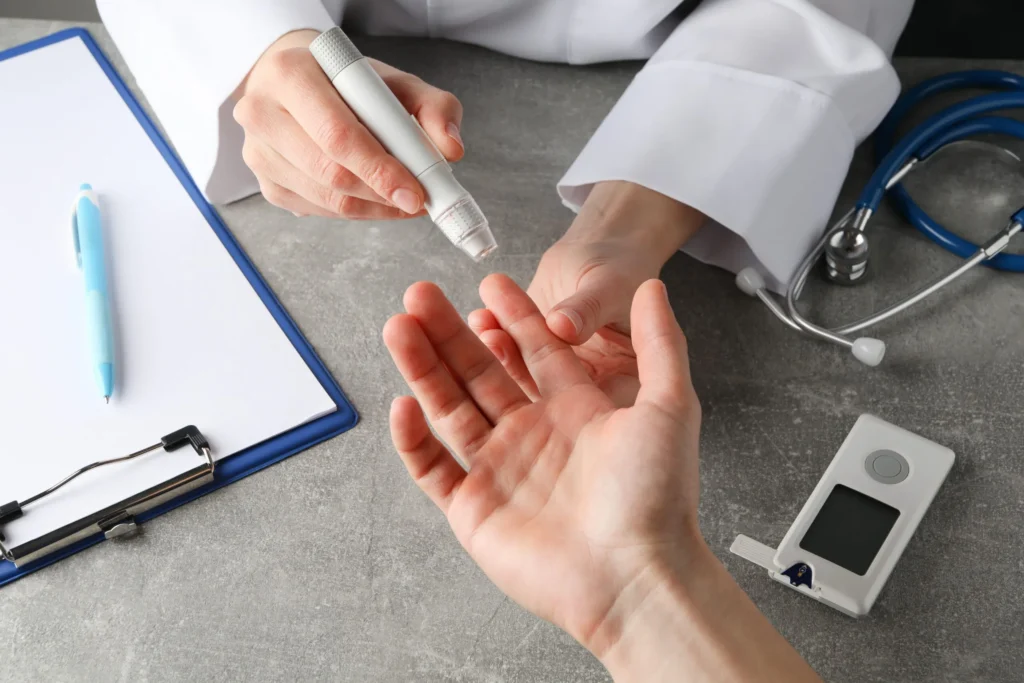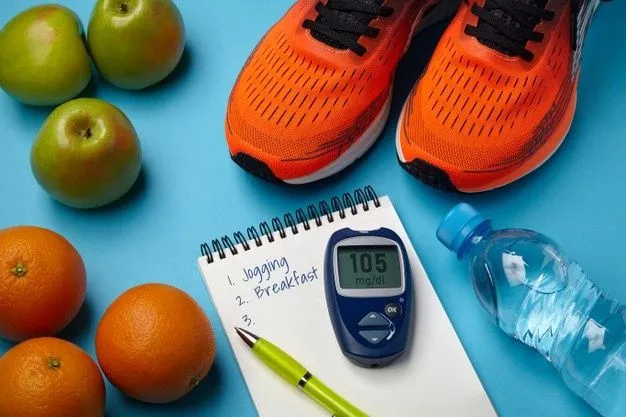Borderline diabetes, also known as prediabetes, is a condition where blood sugar levels are higher than normal but not yet high enough for a diagnosis of type 2 diabetes. It is estimated that up to 70% of people with prediabetes will develop diabetes at some point in their life. Recognizing the signs, understanding the risk factors, and taking preventive measures can help manage and reverse this condition. In this comprehensive guide, we will explore the signs, symptoms, diagnosis, and prevention strategies for borderline diabetes.
What is Borderline Diabetes (Prediabetes)?
Prediabetes is a condition that occurs before the onset of type 2 diabetes. It is characterized by blood sugar levels that are higher than normal but not elevated enough to be diagnosed as diabetes. Prediabetes is often referred to as borderline diabetes. During this stage, the body becomes resistant to insulin, the hormone responsible for regulating blood sugar levels. As a result, blood sugar remains elevated, increasing the risk of developing type 2 diabetes.
Signs and Symptoms of Borderline Diabetes
Borderline diabetes does not typically present with noticeable symptoms. Most people are unaware that they have prediabetes until they undergo testing. However, as the condition progresses, some individuals may experience subtle cues that indicate the need for further evaluation. These signs and symptoms may include:
- Increased thirst and frequent urination: Prediabetic individuals may feel thirstier than usual and have to urinate more frequently as their blood sugar levels rise.
- Fatigue and tiredness: Borderline diabetes can contribute to feelings of fatigue and decreased energy levels.
- Unexplained weight loss: Some individuals with prediabetes may experience unintentional weight loss due to the excretion of excess sugar in the urine.
- Blurred vision: High blood sugar levels can cause changes in vision, leading to blurry vision.
- Dark patches on the skin: A condition called acanthosis nigricans, characterized by dark, velvety patches on the skin, can be an early warning sign of prediabetes.

Diagnosing Borderline Diabetes
To diagnose prediabetes, healthcare professionals rely on blood tests that measure blood sugar levels. The following tests are commonly used for diagnosis:
- Fasting blood sugar test: This test measures blood sugar levels after an overnight fast. A fasting blood sugar level between 100-125 mg/dl indicates prediabetes.
- Glucose tolerance test: During this test, a person consumes a sugary solution, and blood sugar levels are measured at regular intervals. A blood sugar level of 140-199 mg/dl after two hours indicates prediabetes.
- Hemoglobin A1c test: The A1c test provides an average of blood sugar levels over the past 2-3 months. An A1c level of 5.7-6.4% indicates prediabetes.
It is important to note that a doctor may repeat these tests to confirm the diagnosis and rule out any temporary spikes in blood sugar levels.
Risk Factors for Borderline Diabetes
Several risk factors increase the likelihood of developing prediabetes. These include:
- Age: The risk of prediabetes and type 2 diabetes increases with age, particularly for individuals over 45 years old.
- Obesity and overweight: Being overweight or obese significantly increases the risk of developing prediabetes.
- Family history: Having a close family member with type 2 diabetes raises the risk of prediabetes.
- Sedentary lifestyle: Lack of physical activity and a sedentary lifestyle contribute to the development of prediabetes.
- Gestational diabetes: Women who had gestational diabetes during pregnancy are at higher risk of developing prediabetes.
- Polycystic ovary syndrome (PCOS): PCOS is a hormonal disorder that increases the risk of prediabetes.
- High blood pressure and high cholesterol: Individuals with these conditions have an increased risk of developing prediabetes.
- Certain ethnicities: African American, Hispanic, Latino, Native American, Asian American, and Pacific Islander individuals are at higher risk of prediabetes.
Complications of Untreated Borderline Diabetes
If left untreated, prediabetes can lead to various complications, including:
- Type 2 diabetes: Prediabetes often progresses to type 2 diabetes if lifestyle changes are not implemented.
- Cardiovascular diseases: High blood sugar levels can contribute to the development of heart disease and stroke.
- Kidney damage: Prolonged elevated blood sugar levels can damage the kidneys, leading to kidney disease.
- Nerve damage: Prediabetes can cause peripheral neuropathy, resulting in numbness, tingling, and loss of sensation in the extremities.

Prevention and Management of Borderline Diabetes
Prediabetes is a reversible condition, and early intervention can prevent its progression to type 2 diabetes. Lifestyle modifications play a crucial role in managing and preventing prediabetes. Here are some strategies for prevention and management:
Healthy Diet
A balanced diet is essential in managing prediabetes. Focus on consuming nutrient-dense foods, including fruits, vegetables, lean proteins, whole grains, and healthy fats. Limit the intake of added sugars, processed foods, and unhealthy fats. Consider working with a dietitian to create a personalized meal plan that supports blood sugar control.
Regular Physical Activity
Engaging in regular physical activity helps improve insulin sensitivity and manage blood sugar levels. Aim for at least 150 minutes of moderate-intensity aerobic activity, such as brisk walking, cycling, or swimming, per week. Additionally, incorporate strength training exercises to build muscle and enhance overall fitness.
Weight Management
Maintaining a healthy weight is crucial in preventing and managing prediabetes. Losing just 5-10% of body weight can have significant benefits in reducing the risk of developing type 2 diabetes. Focus on creating a calorie deficit through a combination of healthy eating and regular exercise.
Medications
In some cases, healthcare professionals may prescribe medications, such as metformin, to help manage blood sugar levels in individuals at high risk of developing type 2 diabetes. These medications can improve insulin sensitivity and reduce the likelihood of progression to diabetes.
Regular Check-ups
Regular check-ups with a healthcare provider are essential for monitoring blood sugar levels and overall health. Routine blood tests can help detect any changes in blood sugar levels and guide appropriate interventions.
Stress Management
Chronic stress can contribute to insulin resistance and worsen prediabetes. Implement stress management techniques such as mindfulness, meditation, deep breathing exercises, or engaging in hobbies and activities that promote relaxation.
Get Support
Seek support from healthcare professionals, family, and friends to stay motivated and maintain healthy lifestyle changes. Consider joining support groups or educational programs that provide resources and guidance for managing prediabetes.
Borderline diabetes, or prediabetes, is a condition characterized by elevated blood sugar levels that are not yet considered diabetes. Recognizing the signs, understanding the risk factors, and implementing preventive measures are crucial in managing and reversing prediabetes. By adopting a healthy lifestyle, including a nutritious diet, regular physical activity, weight management, and regular check-ups, individuals can significantly reduce the risk of developing type 2 diabetes and associated complications. Take charge of your health and make the necessary changes to prevent prediabetes from progressing. Remember, early intervention is key to maintaining optimal health and well-being.